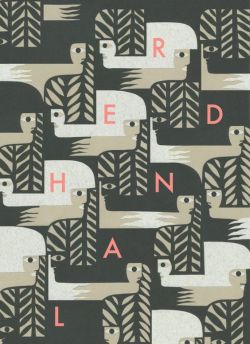 Charlotte Perkins Gilman, (also known as Charlotte Perkins Stetson), was born in New England, in 1860; a descendant of the prominent and influential Beecher family. Her mother, Mary Fitch Westcott, had married a second cousin, the well-known librarian and bibliophile, Frederic Beecher Perkins, grandson of Lyman Beecher, nephew of Henry Ward Beecher and Harriet Beecher Stowe. With sporadic formal schooling consisting of a total of four years between the ages of 7 and 15, two years at the Rhode Island School of Design and a course with the Society for the Encouragement of Studies at Home, Gilman had little formal education by today’s standards. She did, however, have a talent for speaking–and especially preaching–with an ease and power that was often attributed to her Beecher heritage.
Charlotte Perkins Gilman, (also known as Charlotte Perkins Stetson), was born in New England, in 1860; a descendant of the prominent and influential Beecher family. Her mother, Mary Fitch Westcott, had married a second cousin, the well-known librarian and bibliophile, Frederic Beecher Perkins, grandson of Lyman Beecher, nephew of Henry Ward Beecher and Harriet Beecher Stowe. With sporadic formal schooling consisting of a total of four years between the ages of 7 and 15, two years at the Rhode Island School of Design and a course with the Society for the Encouragement of Studies at Home, Gilman had little formal education by today’s standards. She did, however, have a talent for speaking–and especially preaching–with an ease and power that was often attributed to her Beecher heritage.
Her best remembered work today is her semi-autobiographical short story, The Yellow Wallpaper (1892), which she wrote after a severe bout of post-partum depression in the months following the birth of her daughter. The story is about a woman who suffers from mental illness after three months of being closeted in a room by her husband for the sake of her health, who becomes obsessed with the room’s revolting yellow wallpaper. The narrator in the story, perhaps her husband, or perhaps her doctor, who had tried to cure her of her depression through a “rest cure”, did not address the true need — mental stimulation and the freedom to escape the monotony of the room to which she is confined. Masterfully, Gilman combined socialism and feminism to provide a coherent theory of women’s oppression. First published in January 1892, in The New England Magazine, the magazine series that includes The Yellow Wallpaper , usually trades for a few thousand dollars, while the rest of the series can be bought for less than $50.
A few years later, based on lectures she gave and dependent on her own income, she wrote the book Women and Economics. Published in 1898, it was a foundational text of early feminism, and made her famous almost overnight. The work’s argument that women needed economic independence — and not just the ballot — to be truly free and equal, and that society as a whole would be better for their full participation, resonated clearly to women’s social needs of the time. With its publication, and its subsequent translation into seven languages, Gilman earned international acclaim. During this period, Charlotte had a long affair with Adeline Knapp, an author, journalist, and suffragette associated with the San Francisco Bay area. After their affair fizzled out, Charlotte married her cousin and second husband George Houghton Gilman, “a man supportive of her career goals and willing to accept them.” The Small, Maynard & Company, 1898 first edition, of Women and Ecomomics, trades presently for a few hundred dollars.
Gilman’s works of fiction represented the psychological impact of traditional female roles as housewives and mothers. She approved of birth control as a means to greater freedom for women and to improvement of the race, but disapproved of it as promoting sex for pleasure rather than procreation. Her utopian novel, Herland (1915), in which three swaggering male explorers discover a lost civilization populated entirely by women who use parthenogenesis to reproduce, formed some of the first imaginings of science fiction. The book inspired Dr. William Moulton Marsten to create his character, Wonder Woman, as a model of “strong, free, courageous womanhood.” Herland first appeared in The Forerunner, a monthly magazine produced by Gilman herself. Volume 6 of the magazine which was published in 1915, with Herland serialized in twelve parts, trades for a few thousand dollars.
Long unknown to Gilman scholars, Art Gems for the Home and Fireside written by Mrs. Charles Walter Stetson [Charlotte Perkins Gilman], is now recognized as the pioneering feminist’s first book. The roughly 100 page, illustrated volume covers forty-nine artists, each work accompanied by commentary written by Gilman. At a glance, the volume appears little more than a Victorian American parlor book, with little relation to Gilman’s later feminist, socialist and utopian ideologies. But, careful examination reveals that, whether she wrote about race, suffrage, or art, Gilman was a sensitive social critic. Her commentary on the images in Art Gems is frequently sarcastic, occasionally biting, especially in regard to the representation of women in the artworks that she included. The first edition published in 1988, Providence, RI: J.A. & R.A. Reid trades for a few thousand dollars.
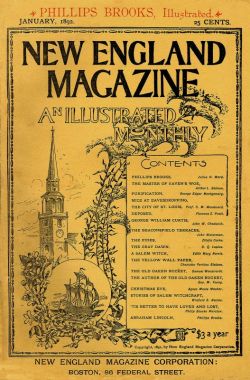
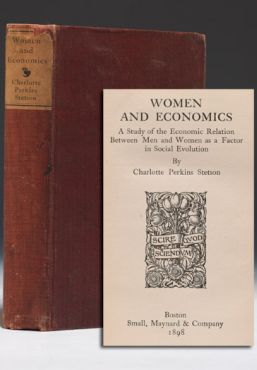
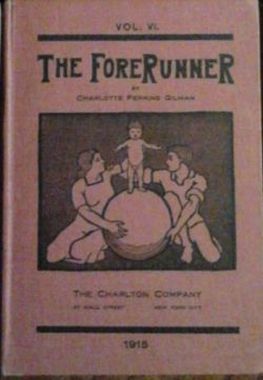
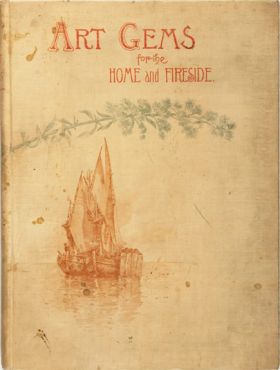
{ 1 comment… read it below or add one }
Do you know how many original copies of the January 1892 New England Magazine with the Yellow Wallpaper still exist, approximately? What is more rare…a first edition of the Yellow Wallpaper Book, or the first publishing of the story in the Yellow Wallpaper? I’m not referring to a bound compilation of the New England Magazine, but an actual copy. Thank you.